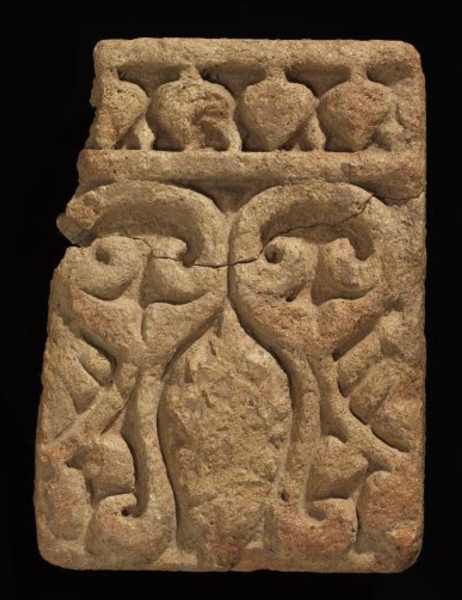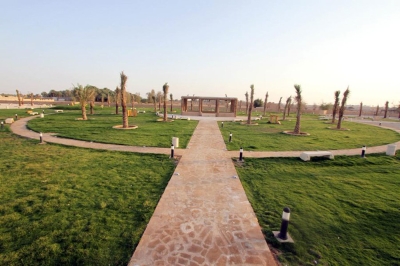
The Wall Tile is one of the artifacts selected to participate in the Saudi Archeological Masterpieces Through the Ages Exhibition, held at the Louvre Museum in the French capital, Paris, in 2010. The exhibition included three hundred pieces made of various materials and spanning different eras. These are original artifacts from various regions of the Kingdom of Saudi Arabia, classified chronologically into three groups: Pieces from prehistoric periods, pieces from pre-Islamic periods, and pieces from Islamic periods.
Description of the wall tile
It is an artifact made of terracotta tiles (baked clay) dating back to the Islamic period. It was discovered in al-Mabiyat, a village in AlUla Governorate, which is part of al-Madinah al-Munawwarah Province in Saudi Arabia. The site is located about twenty km from AlUla and approximately three hundred km from al-Madinah al-Munawwarah.
Usages of the wall tile
The wall tile was used as an architectural ornament. Its surface is divided into two sections: the first is a frieze at the top, decorated with consecutive triangles interspersed with horizontally repeating diamonds. The other section represents the main surface of the ornament, featuring a vegetal design. The tile measures twenty-three cm in length, seventeen cm in width, and 4.5 cm in thickness.
History of the wall tile
The wall tile dates back to between the eighth and ninth centuries. The discovery is part of the outcomes of archeological surveys and excavations conducted by the Antiquities and Museums Sector in Saudi Arabia over the past years. It is among the findings of Saudi archeologists, scientific missions, and collaborative research teams across the Kingdom.
The wall tile is preserved at the National Museum in the capital, Riyadh, and is registered under number 2385. It is among the selected pieces featured alongside a diverse collection of other archeological discoveries from the Kingdom in the Saudi Archeological Masterpieces Through the Ages Exhibition.
Significance of the wall tile
This piece, adorned with geometric and abstract vegetal elements, highlights the architect's focus during that period on decorating residential units with ornaments that align with their culture. It showcases the architect's artistic skill in embellishing and adorning buildings. The decorative elements on this piece display a noticeable similarity to the decorations of Samarra in Iraq.
Related quizzes
Related articles

